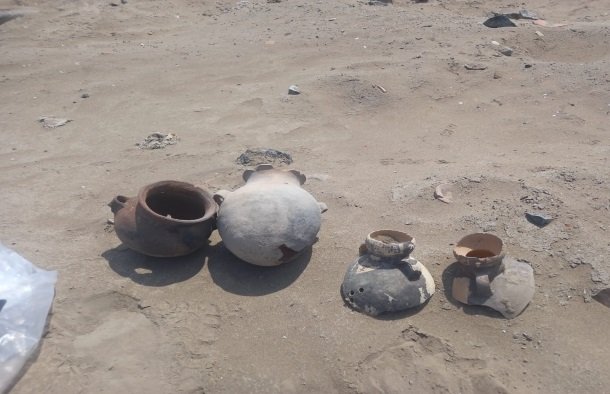Archaeologists from the Ministry of Culture (Peruvian State) have uncovered ceramic vessels from the Chancay culture in the Chancay district of Lima, Peru.
The discovery was made following reports by locals of illegal excavations, an endemic problem in the region known as “Huaqueo” involving the exploitation of archaeological sites for artefacts to be sold on the black market.
Around 20,000 archaeological pieces are illegally extracted and trafficked out of Peru annually, which poses a constant danger to the preservation of the country’s cultural heritage.
Following a joint inspection by officials of the Municipality of Chancay and the Ministry of Culture, archaeologists have recovered ten pre-Hispanic ceramic vessels belonging to the Chancay culture at the Lauri Archaeological Site.
The Chancay culture emerged after the fall of the Wari civilisation around AD 1,000 on the central coast of Peru. Parts of the southern Chancay area were conquered by the Chimú in the early 1400s, and by around AD 1450 the Inca had dominated the entire Chimú territory.
Among the recovered vessels are ceramic jugs, pots and plates, which the Chimú manufactured using moulds.
The vessels are decorated with the “black on white” style, a technique commonly associated with the Chimú that involved painting a white background on a rough matt surface, followed by a dark colour for the decorative elements.
According to the Peruvian State: “The initial evaluation of the vessels confirmed that they are noticeably deteriorated, and in some cases fragmented due to their exposure to adverse environmental conditions or their violent manipulation. Subsequently, the pieces were transferred to the institutional headquarters for their preservation.”
Header Image Credit : Ministry of Culture
Sources : Peruvian State





